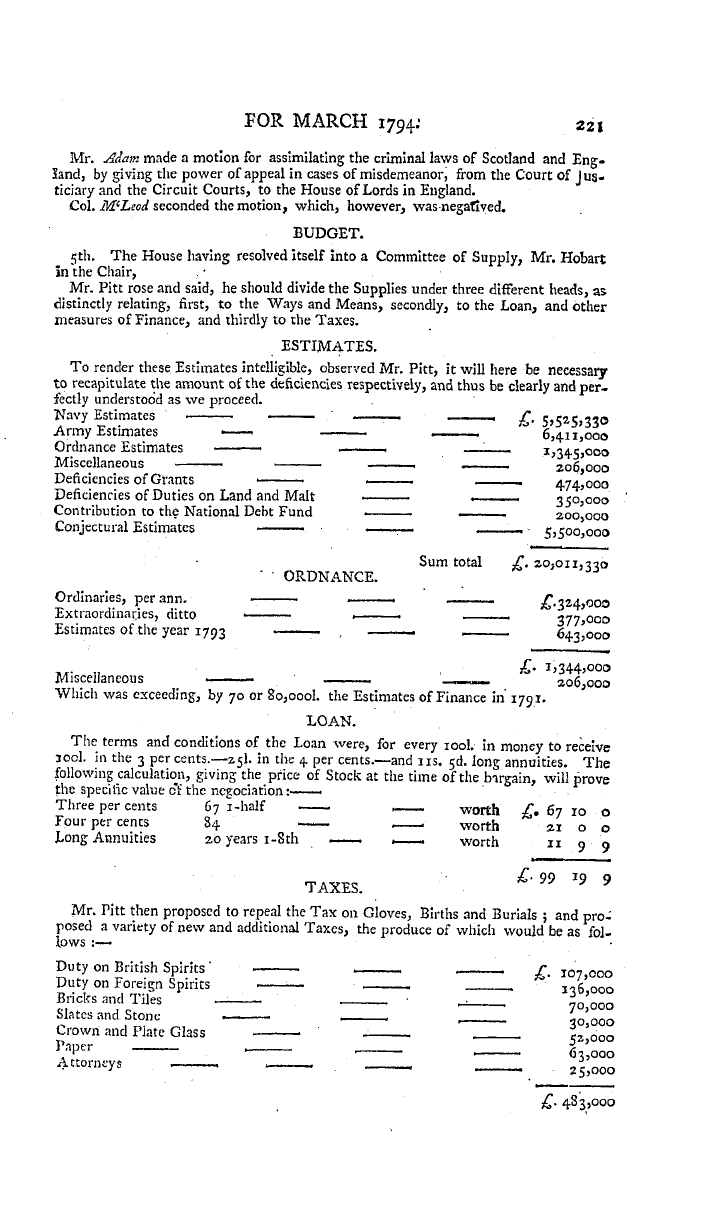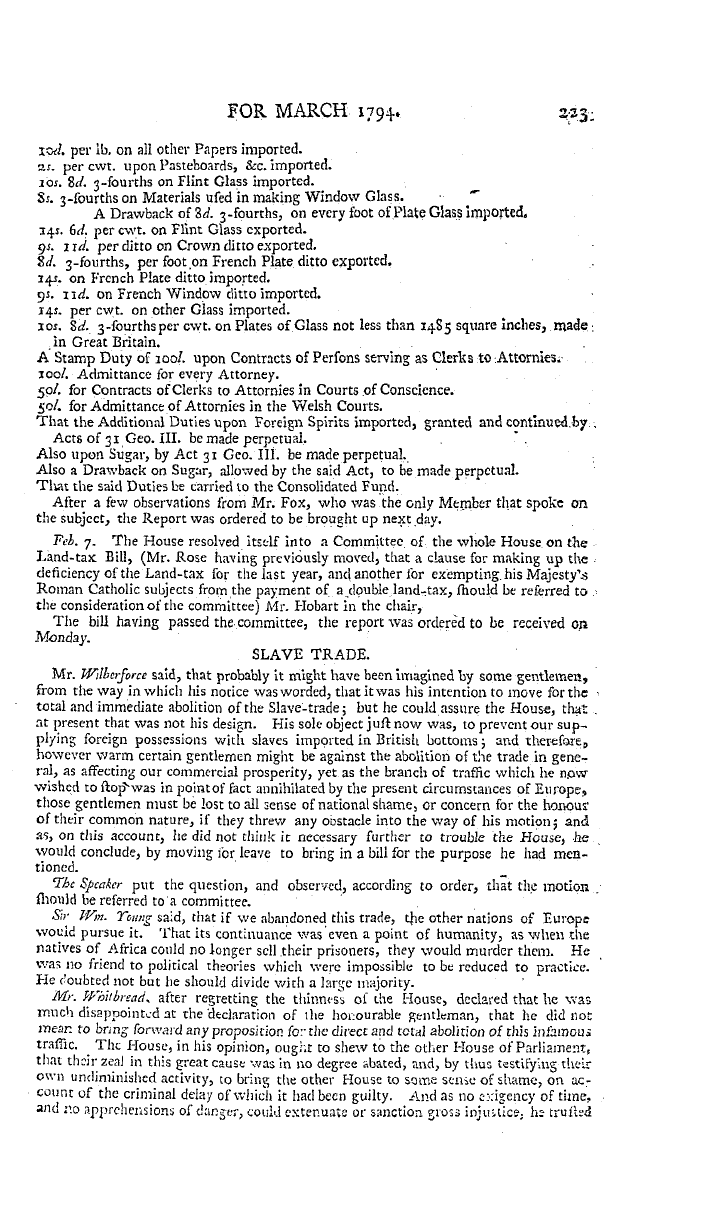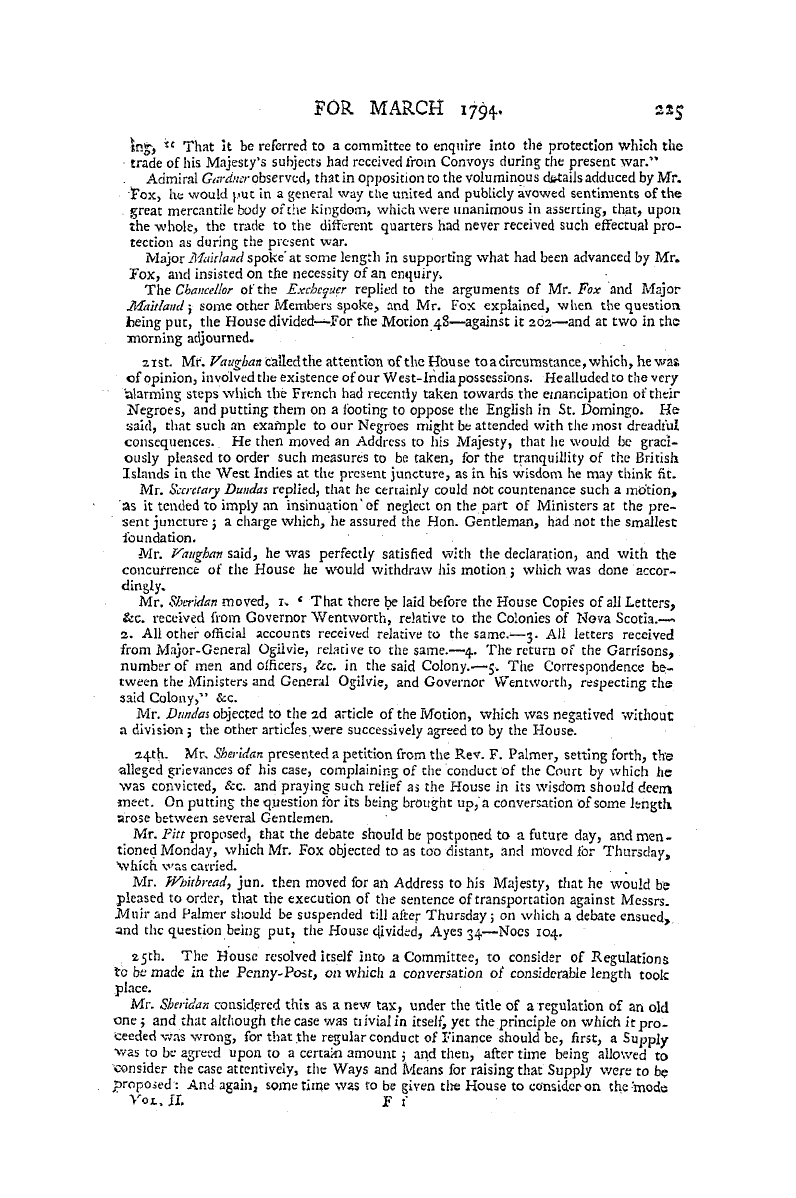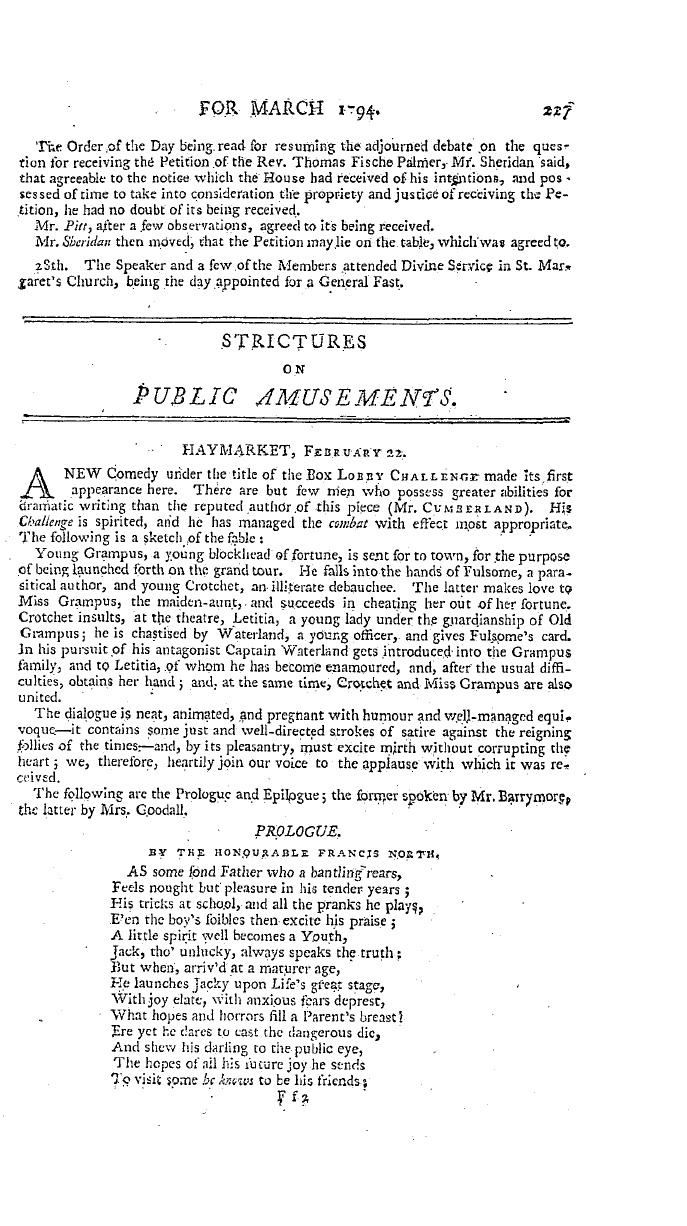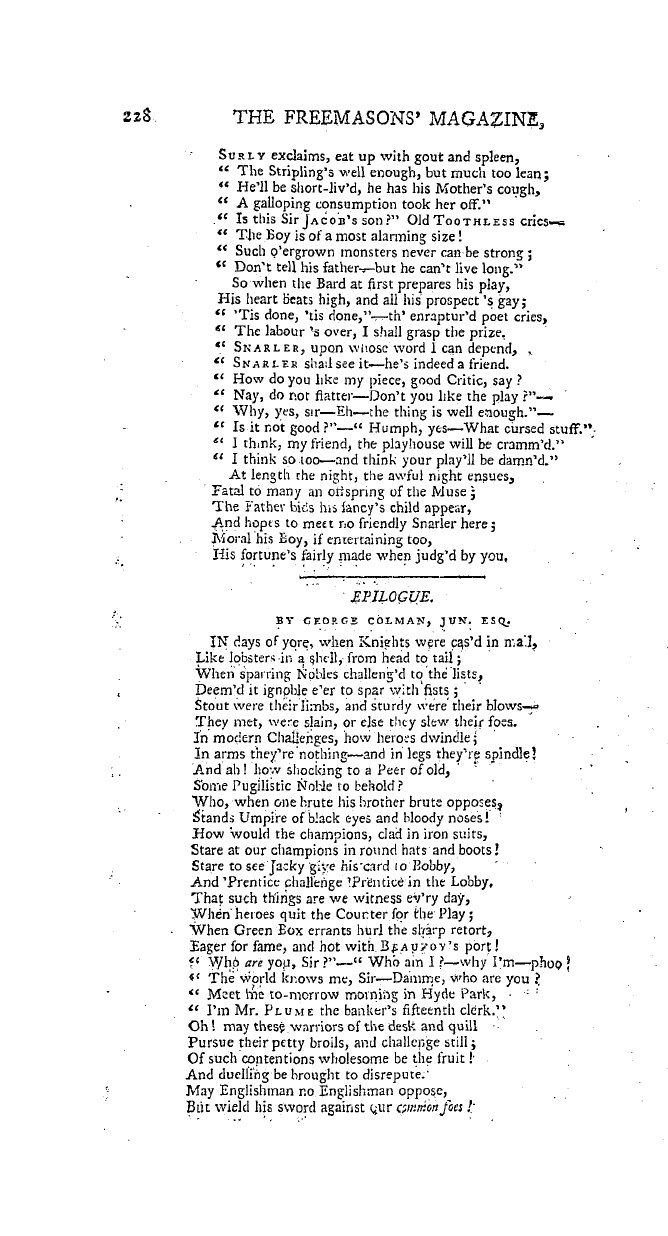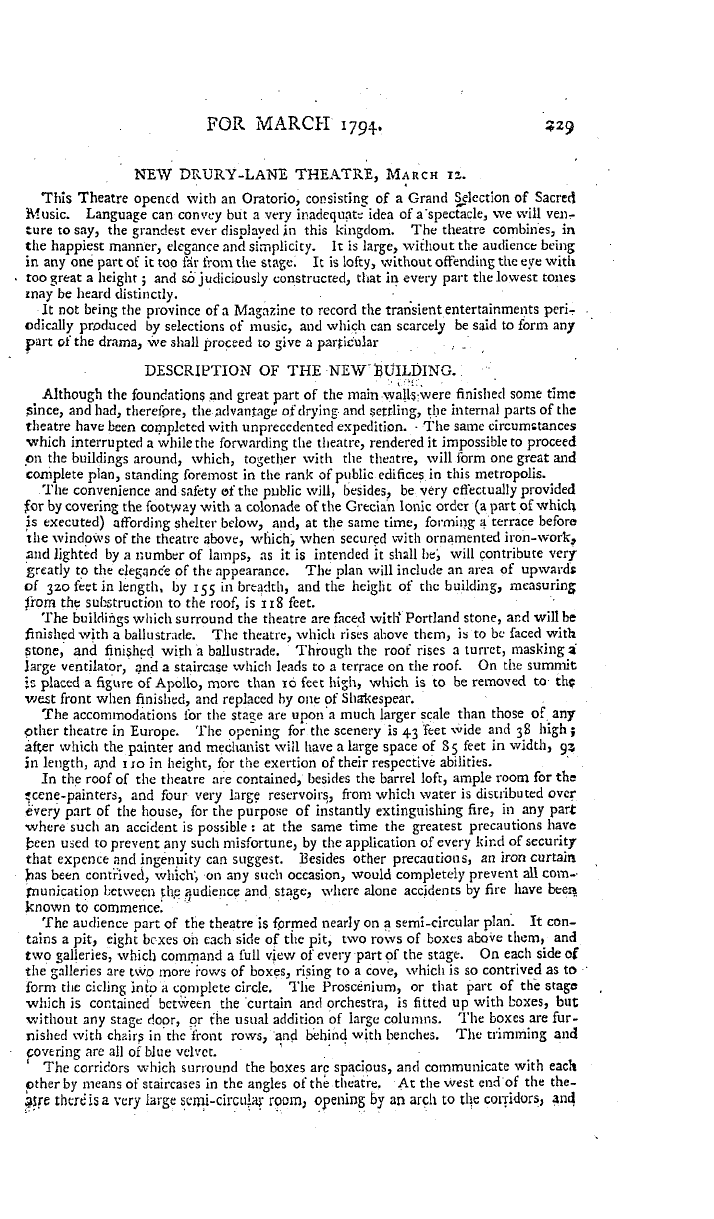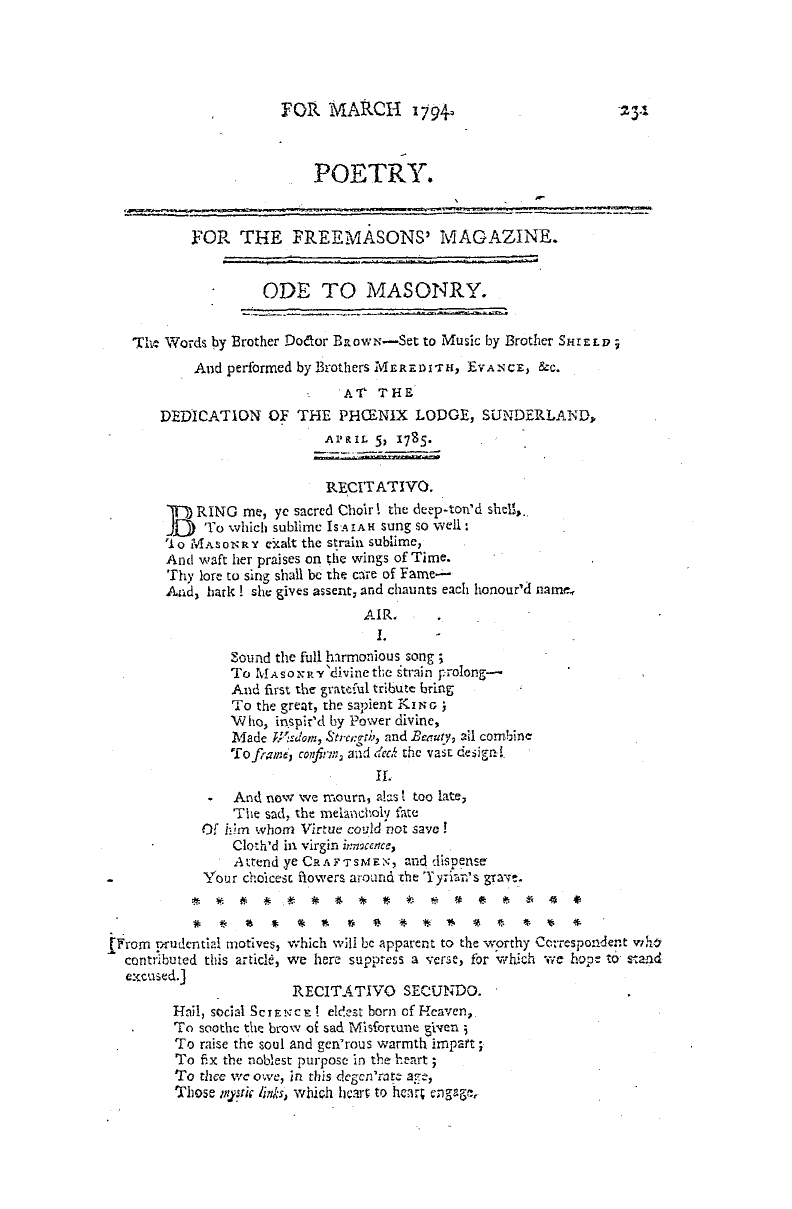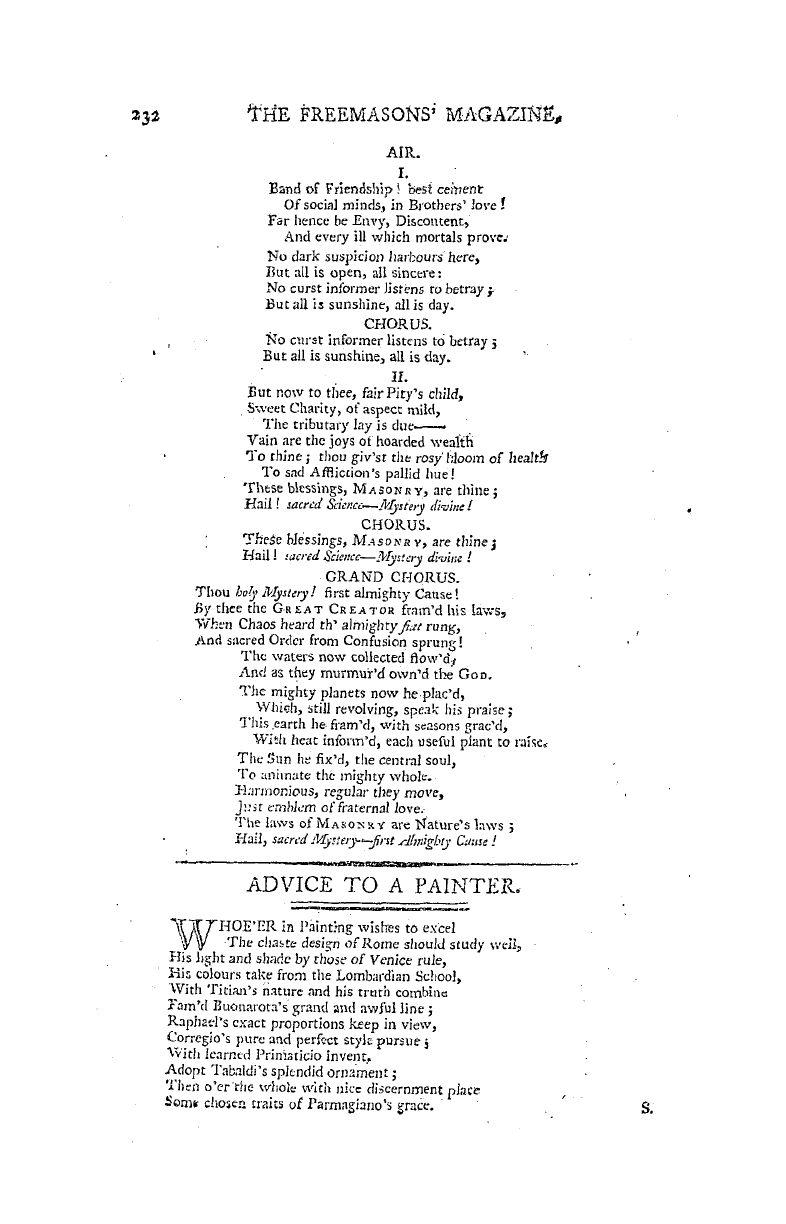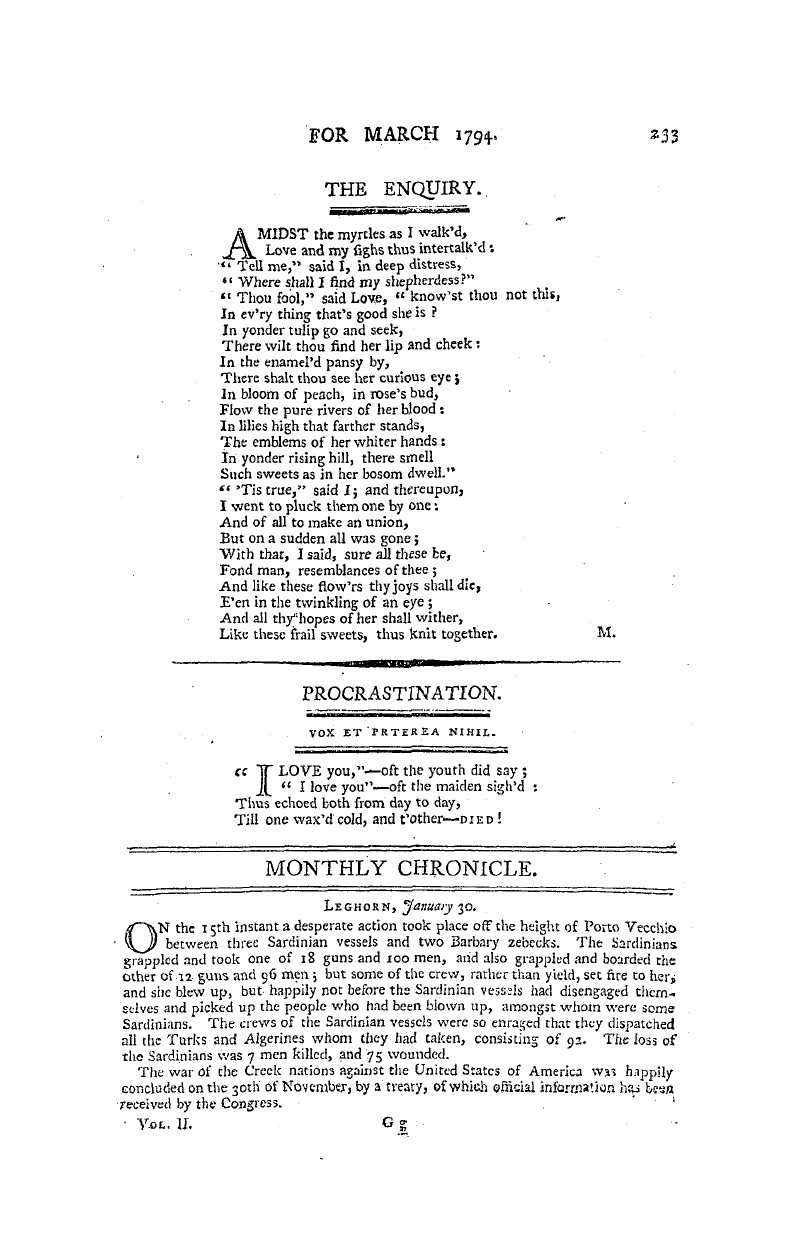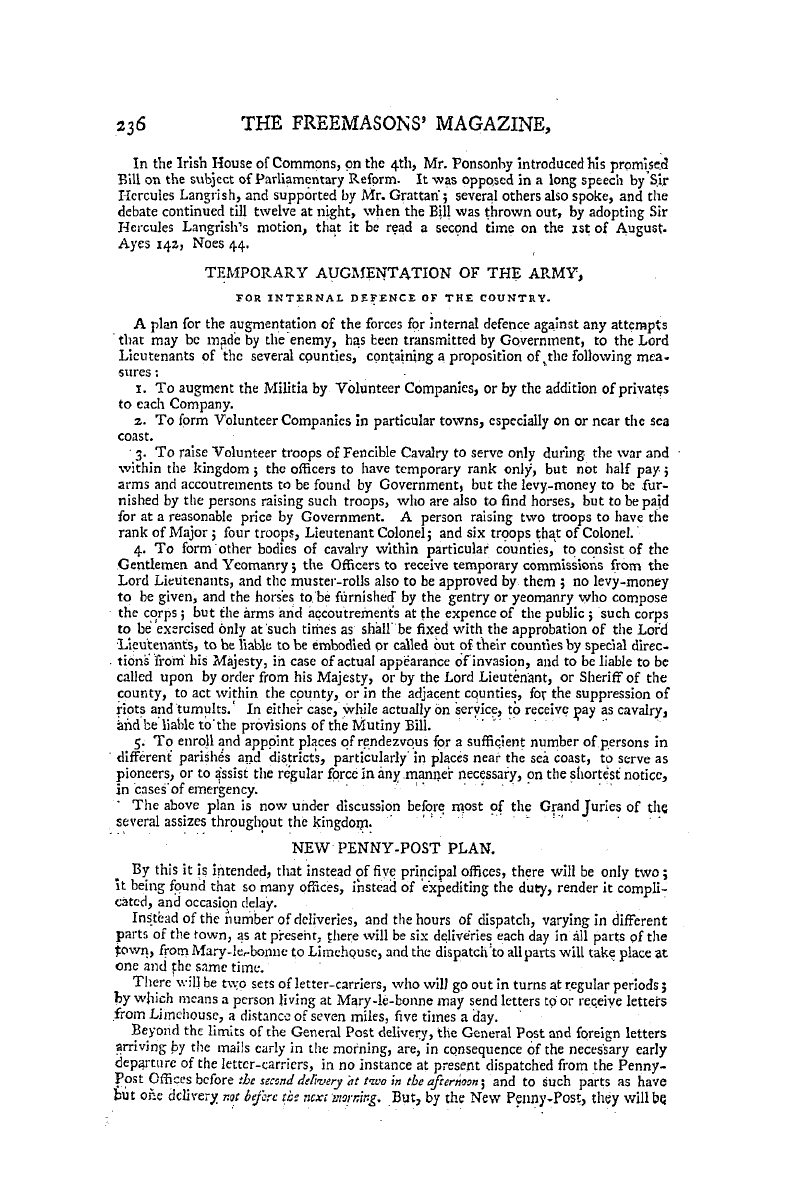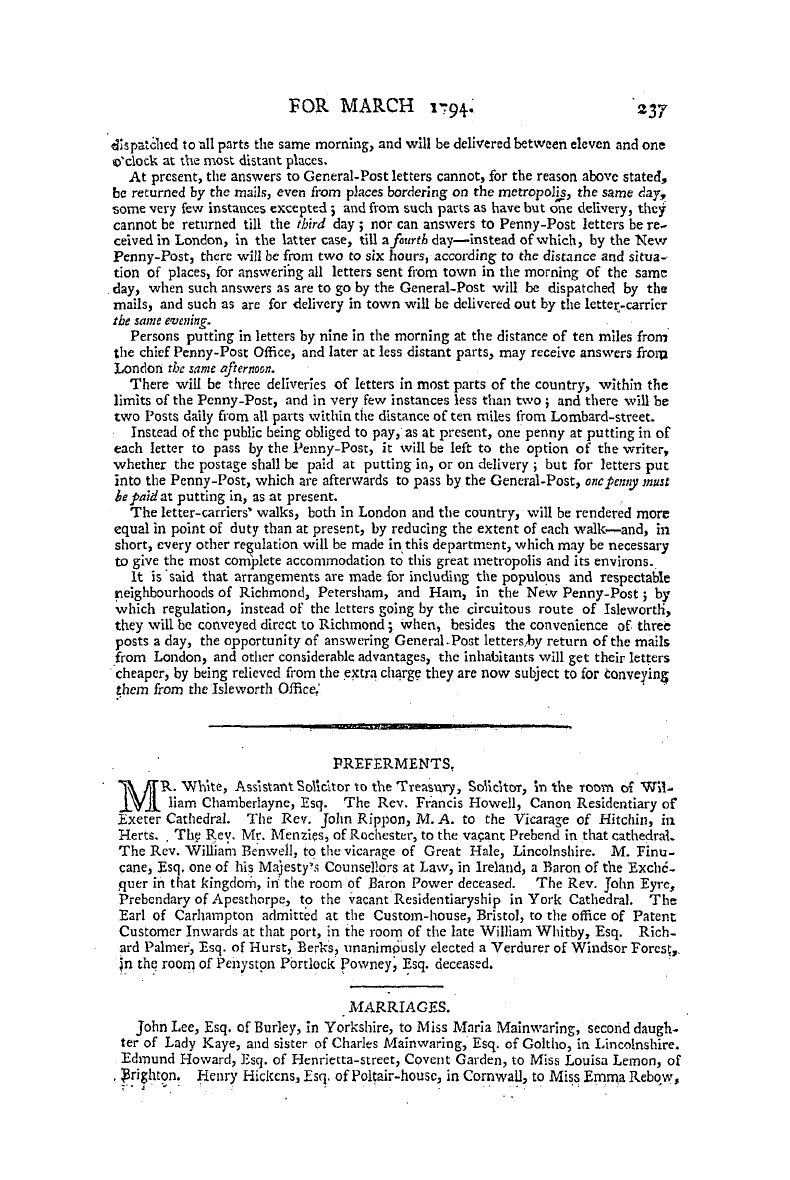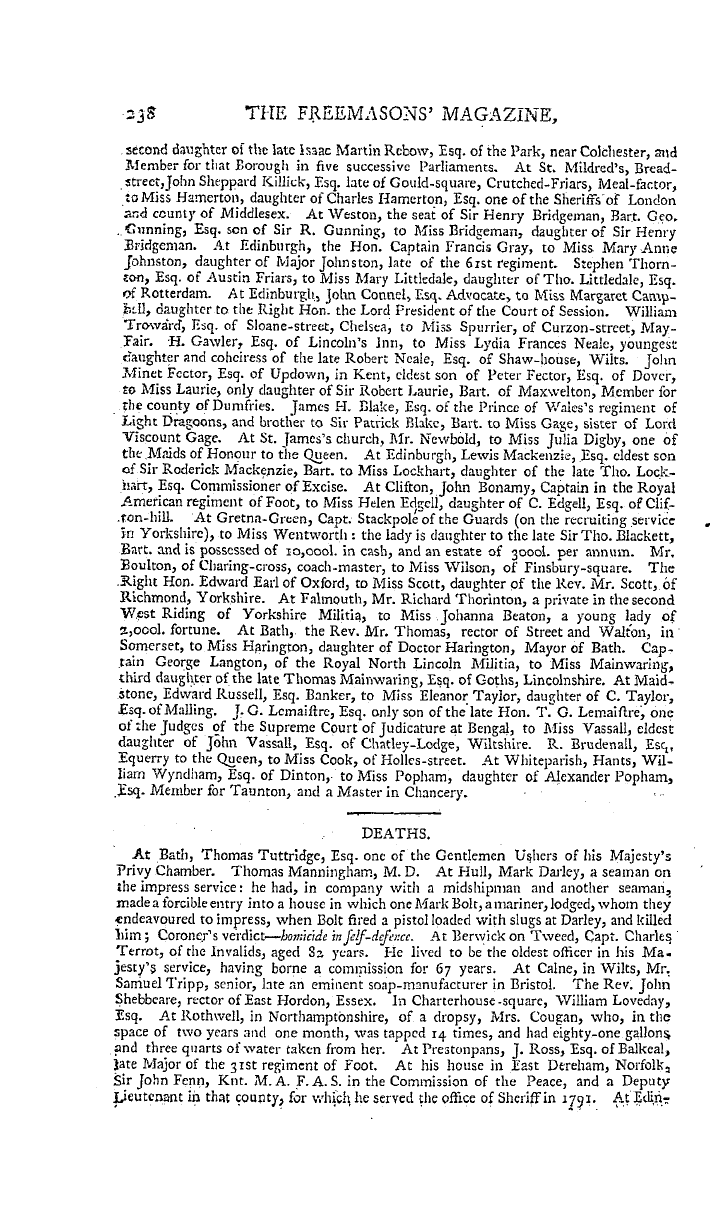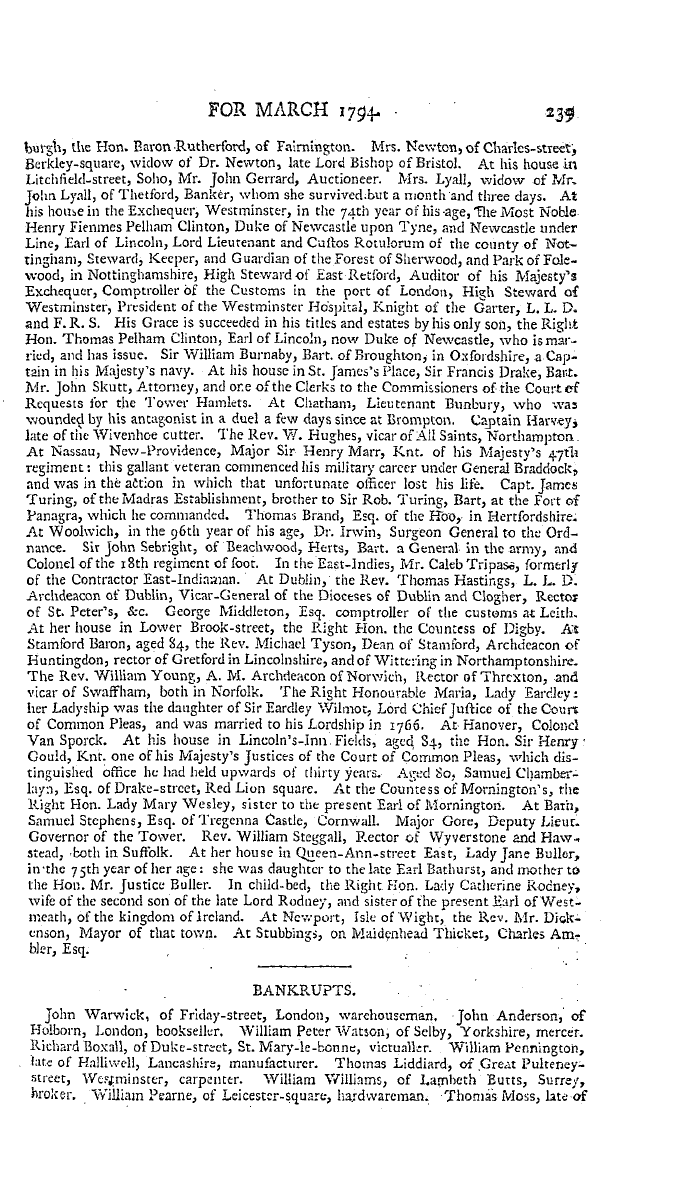-
Articles/Ads
Article AN ACCOUNT OF DRUIDISM. ← Page 2 of 6 →
Note: This text has been automatically extracted via Optical Character Recognition (OCR) software.
An Account Of Druidism.
willing sacrifice ; and , hence , the creditor postponed his debts till the ' next life , and the merchant threw : letters for his correspondents into the funeral fires , to be , thence remitted into the world of spirits ! The . Druids believed also , that the soul , having left one earthl y habitation , entered into another ; that from one bod y decayed and turned to . clay , it ' passedinto another fresh and lively , and fit to perform all the ' functions of animal life
. This was the doctrine of transmigration , maintained in common by the Druids and the Brachmans * . Sir William Jones describes a great empire , the empire of Iran , the . religion of which WEIS Sabian , so called from the word Saba , that signifies a host ^ or , niorS properly , the host of Heaven , in the worship o ' f which the Sabian ritual consisted . Mababcli was the first monarch of Iran : his reli gion he was s _ tid to have received from the Creator , as well as the orders
established throughout his monarchy , religious , military , mercantile , and servile . These regulations were said to be written in the lancruaie of the gods f . The tenets of this religion were , that there is but one God , pure and good ; that the soui was immortal , artd art emanation from the Deity ; that it was for a season separated ffohi the Supreme Being , and confined to the earth to inhabit liuman bodies , but would return to tile Divine Essence again . The pure ! - sectaries of this
religion maintained , that the worship of lire was irterely popular , and that they appeared only to venerate that stln upon whose exalted orb they fixed their eyes , whilst they really humbled themselves before the Supreme G & d ; They were assiduous observers of the tnotiOns Of the ' lieavenl y luminaries , and established artificial cycles , with distinct names , to indicate the periods in which thfe fixed , stars appeared to
revolve . They are also said to have known the secret powers ' of nature , and thence to have afcquired ihi . reputation of magicians . Sects of these still remain in India , called Sufi , clad in woollen garments or mantles . In ancient times every priesthood among the eastern nations had several species of sacred characters , which they used in their . hiero-grammatic writings ' to render their reli gion more mysterious ,
tVhilst they preserved its written doctrines and precepts in such characters as none but their own order could understand . These sacred characters have been often noticed by antiquarians under the'd ' enomi-t nation of O gham J . The Ogham characters were used by the priests of India and Persia , the Egyptians and Phenicians , and the Druids of the . British isles . Sir William Jones tells ns , that the writings at Persepolis bear a strong resemblance to the O gham ; that the unknown inscriptions in the palace of Jemschid are in the same characters , and are ,
Note: This text has been automatically extracted via Optical Character Recognition (OCR) software.
An Account Of Druidism.
willing sacrifice ; and , hence , the creditor postponed his debts till the ' next life , and the merchant threw : letters for his correspondents into the funeral fires , to be , thence remitted into the world of spirits ! The . Druids believed also , that the soul , having left one earthl y habitation , entered into another ; that from one bod y decayed and turned to . clay , it ' passedinto another fresh and lively , and fit to perform all the ' functions of animal life
. This was the doctrine of transmigration , maintained in common by the Druids and the Brachmans * . Sir William Jones describes a great empire , the empire of Iran , the . religion of which WEIS Sabian , so called from the word Saba , that signifies a host ^ or , niorS properly , the host of Heaven , in the worship o ' f which the Sabian ritual consisted . Mababcli was the first monarch of Iran : his reli gion he was s _ tid to have received from the Creator , as well as the orders
established throughout his monarchy , religious , military , mercantile , and servile . These regulations were said to be written in the lancruaie of the gods f . The tenets of this religion were , that there is but one God , pure and good ; that the soui was immortal , artd art emanation from the Deity ; that it was for a season separated ffohi the Supreme Being , and confined to the earth to inhabit liuman bodies , but would return to tile Divine Essence again . The pure ! - sectaries of this
religion maintained , that the worship of lire was irterely popular , and that they appeared only to venerate that stln upon whose exalted orb they fixed their eyes , whilst they really humbled themselves before the Supreme G & d ; They were assiduous observers of the tnotiOns Of the ' lieavenl y luminaries , and established artificial cycles , with distinct names , to indicate the periods in which thfe fixed , stars appeared to
revolve . They are also said to have known the secret powers ' of nature , and thence to have afcquired ihi . reputation of magicians . Sects of these still remain in India , called Sufi , clad in woollen garments or mantles . In ancient times every priesthood among the eastern nations had several species of sacred characters , which they used in their . hiero-grammatic writings ' to render their reli gion more mysterious ,
tVhilst they preserved its written doctrines and precepts in such characters as none but their own order could understand . These sacred characters have been often noticed by antiquarians under the'd ' enomi-t nation of O gham J . The Ogham characters were used by the priests of India and Persia , the Egyptians and Phenicians , and the Druids of the . British isles . Sir William Jones tells ns , that the writings at Persepolis bear a strong resemblance to the O gham ; that the unknown inscriptions in the palace of Jemschid are in the same characters , and are ,































































